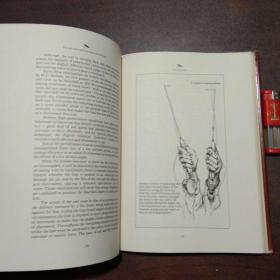Content:
Introduction: Fly fishing is an art form that requires patience, skill, and a deep understanding of the water's behavior. One of the most challenging aspects of fly fishing is dealing with a "walk-the-water" situation, where the current is strong enough to pull your fly away from the target area. In this article, we will delve into the essential techniques for adjusting your bait to conquer the walk-the-water challenge and improve your chances of landing that big catch.
Understanding Walk-the-Water: Before we dive into the techniques, it's important to understand what walk-the-water means in fly fishing. It refers to a situation where the river's current is so strong that it moves your fly across the water surface at a rate that makes it difficult to control. This can be particularly frustrating when you're trying to fish a specific area or present your fly to a particular fish.
Selecting the Right Fly and Leader: The first step in mastering the walk-the-water technique is to choose the right fly and leader. A fly that sinks quickly or has a heavy body can help you maintain better control over your bait. Additionally, a longer leader (typically around 9 to 12 feet) will provide more line to work with and help you manage the current.
Adjusting the Weight of Your Fly: One of the most effective ways to combat walk-the-water is by adjusting the weight of your fly. Adding weight to your fly can help it stay in place against the current. There are several methods to do this:
a. Adding split shot: Attach a small split shot to your leader just above the fly. Experiment with different sizes and distances from the fly to find the perfect balance.
b. Using a weighted fly: Choose a fly that is naturally weighted, such as a streamer or a nymph with a bead head.
c. Adding a sink tip: Attach a sink tip to your leader, which will add weight and help your fly sink faster.
Adjusting the Leader's Taper: The taper of your leader plays a crucial role in managing the walk-the-water situation. A stiffer leader will help you control the fly better against the current. Here are some tips for adjusting your leader's taper:
a. Use a tapered leader: A tapered leader allows the fly to land softly and reduces the chances of spooking fish.
b. Experiment with different tapers: A double-tapered leader is a good all-around choice, but you can also try a straight-tapered or a shooting-tapered leader depending on the water conditions.
c. Adjust the length of the tippet: The tippet is the weakest part of the leader and should be the first to break if pressure is applied. Adjust the length of the tippet to find the optimal balance between control and sensitivity.
Casting Techniques: To effectively fish in a walk-the-water situation, you need to master certain casting techniques:
a. Use a high-cast: A high-cast will help you get your fly over the water surface and into the desired area.
b. Aim upstream: When casting, aim slightly upstream of your target to allow the current to move your fly towards the fish.
c. Practice your timing: Timing is crucial when dealing with a strong current. Practice your casting and retrieve techniques to find the right rhythm.
Retrieve Techniques: Once your fly is in the water, the retrieve technique becomes equally important. Here are some tips:
a. Use a slow retrieve: A slow retrieve allows your fly to sink deeper and increases the chances of attracting fish.

b. Vary your retrieve: Experiment with different retrieves, such as a steady pull, a twitch, or a pause-and-pull motion, to see what works best in your specific situation.
c. Be patient: Fish in a walk-the-water situation may be less active, so be patient and wait for the right moment to make a strike.
Conclusion: Mastering the walk-the-water technique in fly fishing requires practice, patience, and a deep understanding of the water's behavior. By selecting the right fly and leader, adjusting the weight of your fly, adjusting the leader's taper, mastering casting and retrieve techniques, and being patient, you can improve your chances of landing that big catch. Remember, the key to success in fly fishing is to adapt to the water's conditions and keep experimenting until you find the perfect combination of techniques. Happy fishing!












